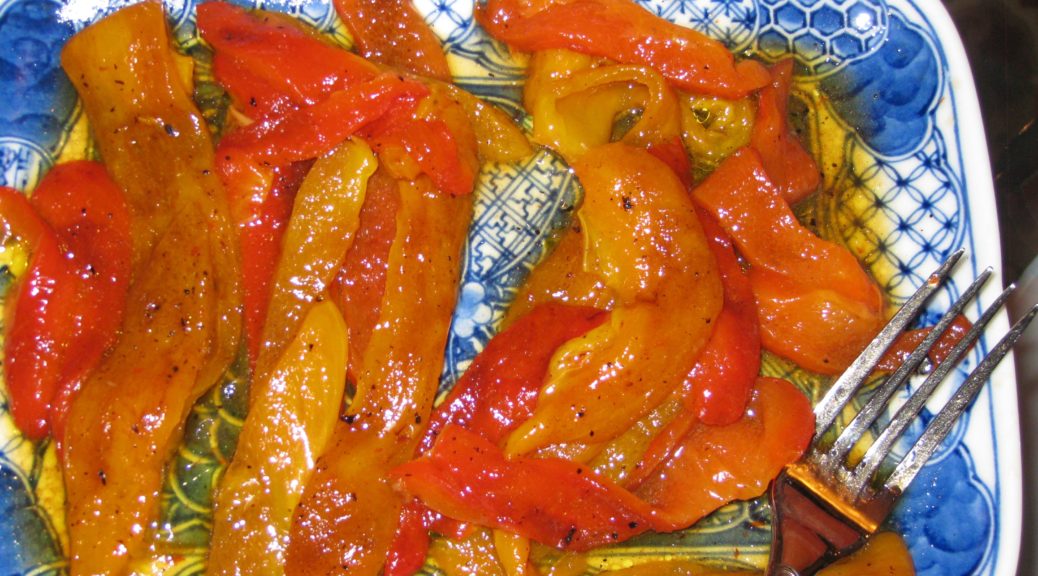October 2, 2017
Roasted peppers are a classic of Italian cuisine. They are a perfect example of ingredient-driven cooking. All that is required are good peppers, good olive oil, and a few minutes of scorching heat. There’s no way to hide bad ingredients, since there are only two (not counting salt).
A wonderful presentation is to prepare an array of roasted vegetables such as peppers, onions, zucchini, tomatoes, eggplant, and scallions served artfully arranged on a platter and anointed with extra-virgin olive oil and sea salt.
It’s a “wonderful” presentation because it looks beautiful, it tastes great, it’s easy to prepare, and it can all be done in advance and served at room temperature. It makes an impressive antipasto platter in the winter and an inviting warm-weather side-dish in the summer.
But let’s not get carried away. Peppers are classic and work very well on their own. If you like how they turn out you can experiment with other vegetables.
The first time I got serious about making these was back in the late 1980s when we lived in Chicago. We had a four story townhouse. The top floor was the master suite with a very large deck. We had redwood planters made to encircle the perimeter of the deck. In addition, we added scores of pots and, when things got a little too crowded on our deck, we expanded to Billy and Carla’s deck next door!
We grew an amazing amount of produce on that deck. I can’t begin to remember all of it but it included tomatoes, tomatillos, sweet peppers, hot peppers, eggplant, a fig tree, corn, cucumbers, zucchini, and an abundance of herbs including enough basil to feed a small country. We installed a grape arbor but the grapes didn’t do well.
We bought an upright freezer and put it in the garage so that we could put up food from the garden.
One year I roasted peppers and conserved them under a layer of olive oil in the refrigerator. They were good but I subsequently discovered that the USDA recommends against this technique as the covering of oil creates an environment where anaerobic bacteria, like the one that causes botulism, can grow.
After that first year, I didn’t preserve roasted peppers in olive oil again but I did make flavored olive oils and flavored vinegars every year right up until we moved full-time to Santa Fe. The USDA has the same recommendation regarding putting herbs in oil but, for some reason, I chose to ignore the advice.
These days, when I want roasted peppers, I just buy fresh peppers at the farmers market, farm stand, or supermarket and roast them. Luckily Bell peppers are available year-round.
In addition to good-quality ingredients, scorching heat is required. The idea is to blacken and blister the skin quickly. If you do that too slowly the flesh of the pepper cooks too much and becomes mushy. For all practical purposes, you cannot blacken the skin too quickly. The flesh will always cook enough to be good. My usual method, as described here, is to use my gas grill on very high heat. If I only want to roast one or two peppers, I put them directly on the gas flame of my stove. Like I said, you cannot blacken the skin too quickly.
As good as the peppers are on their own, they can be used as ingredients in other dishes. Remember the uncooked tomato sauce I posted a few weeks ago? I said that the dish could be made with roasted peppers when tomatoes aren’t in season. Now that tomato season is coming to an end, consider roasting a few extra peppers and using them to make pasta later in the week.
Follow us
Click HERE to join our mailing list and you’ll never miss a recipe again!
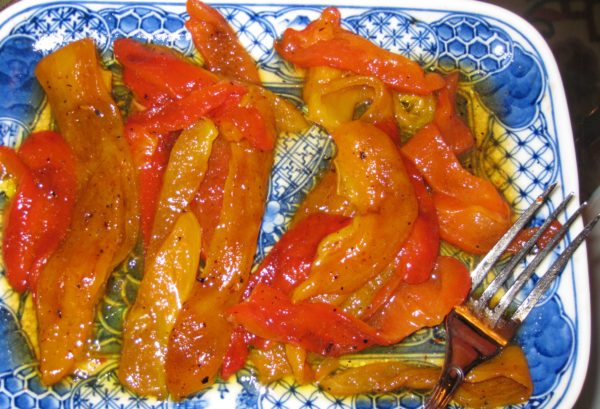
| Prep Time | 15 minutes |
| Cook Time | 15 minutes |
| Passive Time | 20 minutes |
| Servings |
|
- Bell peppers ½ pepper per person as a side dish
- extra virgin olive oil 1 tablespoon per pepper, approximately
- Sea salt to taste
Ingredients
|

|
- Heat a gas grill on the highest setting for at least 10 minutes.
- Put the peppers on the grill. Cover the grill
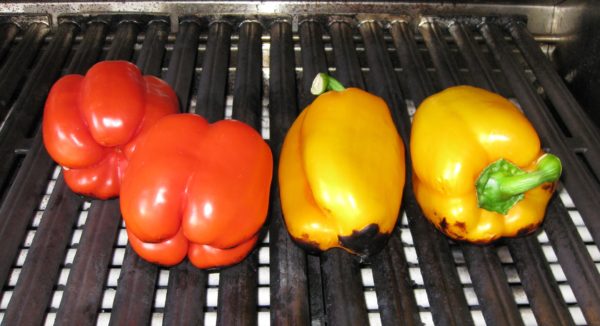
- Keep the heat on high.
- Turn the peppers every few minutes until the skin is evenly blackened.
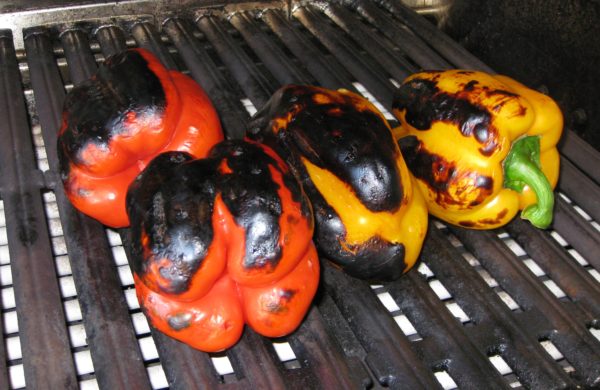
- You will probably have to stand the peppers on their bottom end to get that part blackened.
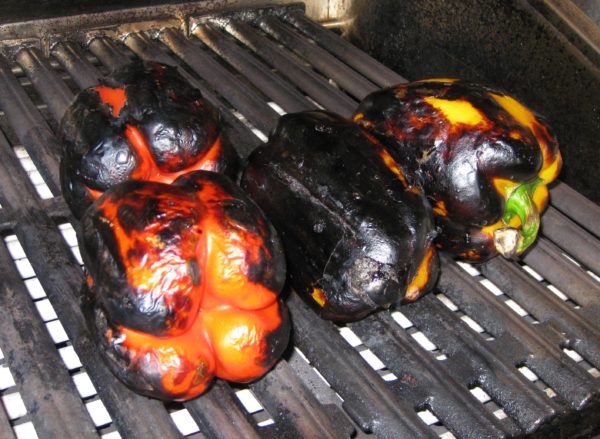
- When the skin is black, put the peppers in a heatproof dish with a tight-fitting cover.
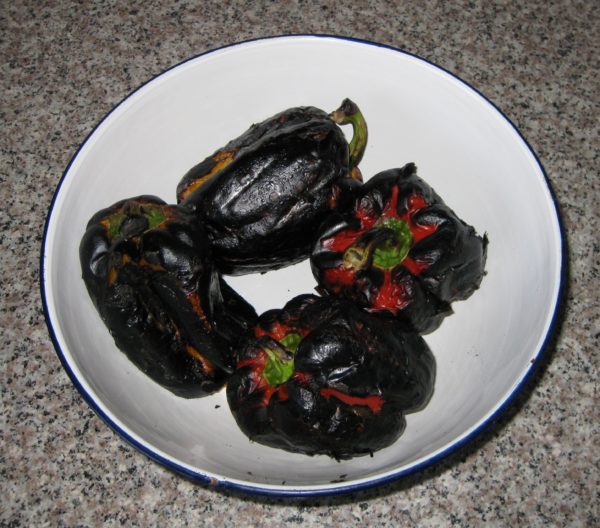
- Cover and allow the peppers to cool and steam for 10-20 minutes. This will finish cooking the peppers and loosen the skin.
- Holding the peppers over the dish to catch any liquid, remove the blistered skin using your fingers. The skin should slip off easily.
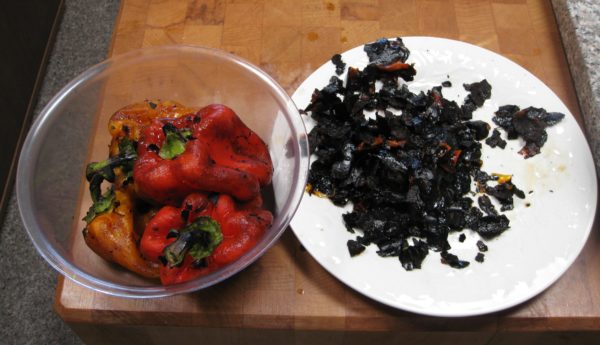
- Split the peppers in half. Using the tip of a sharp knife, remove the fleshy ribs of the peppers. Remove the seeds.
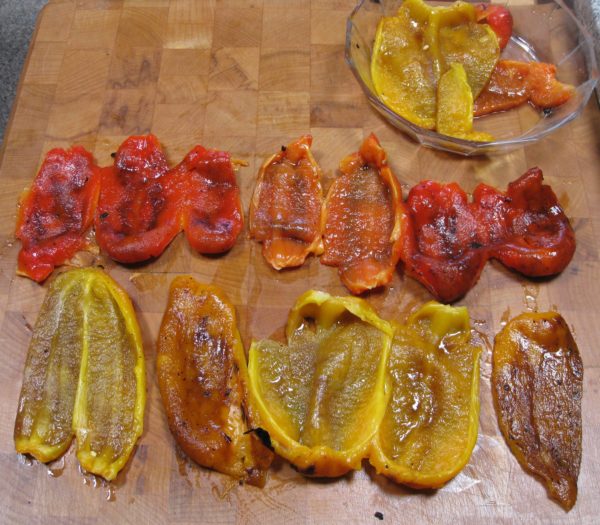
- Slice the peppers lengthwise in ½ inch wide strips.
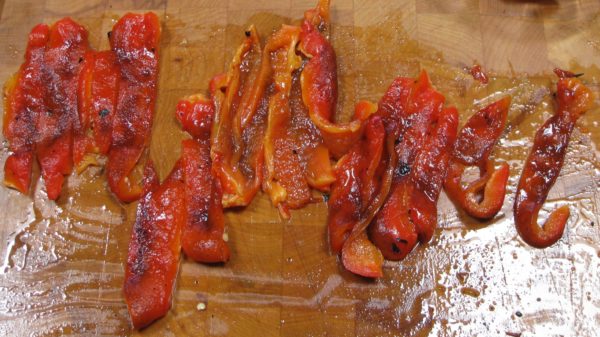
- Pour the collected juices over the peppers, straining out seeds and skin.
- Sprinkle the peppers with olive oil, approximately 1 tablespoon per pepper. Toss well.
- Cover tightly and allow the peppers to sit at room temperature for an hour or two.
- When ready to serve, toss again and sprinkle liberally with coarse sea salt.

- The peppers can be made a day or two in advance and refrigerated after tossing with olive oil. Allow the peppers to come to room temperature for an hour or two before salting and serving.
Copyright © 2017 by VillaSentieri.com. All rights reserved.

